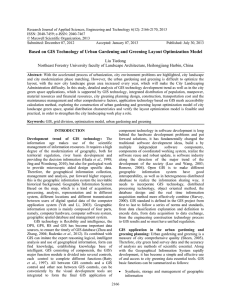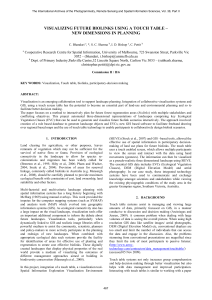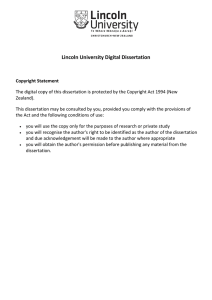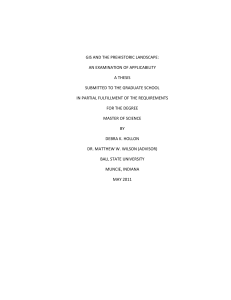ABSTRACT THESIS: STUDENT:
advertisement
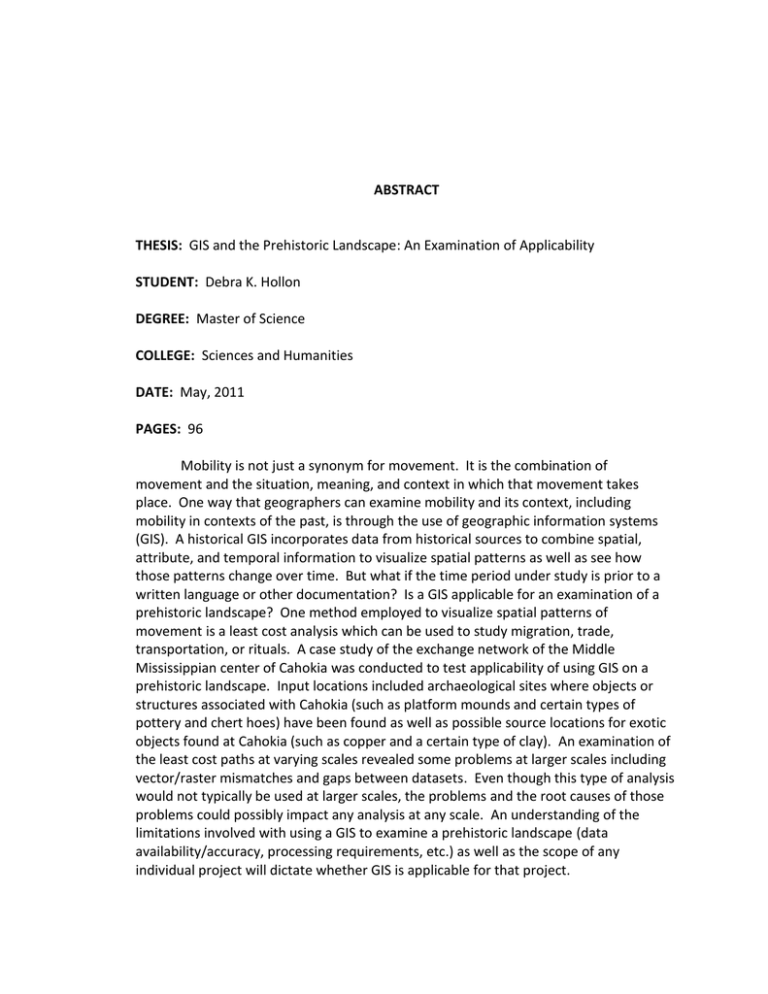
ABSTRACT THESIS: GIS and the Prehistoric Landscape: An Examination of Applicability STUDENT: Debra K. Hollon DEGREE: Master of Science COLLEGE: Sciences and Humanities DATE: May, 2011 PAGES: 96 Mobility is not just a synonym for movement. It is the combination of movement and the situation, meaning, and context in which that movement takes place. One way that geographers can examine mobility and its context, including mobility in contexts of the past, is through the use of geographic information systems (GIS). A historical GIS incorporates data from historical sources to combine spatial, attribute, and temporal information to visualize spatial patterns as well as see how those patterns change over time. But what if the time period under study is prior to a written language or other documentation? Is a GIS applicable for an examination of a prehistoric landscape? One method employed to visualize spatial patterns of movement is a least cost analysis which can be used to study migration, trade, transportation, or rituals. A case study of the exchange network of the Middle Mississippian center of Cahokia was conducted to test applicability of using GIS on a prehistoric landscape. Input locations included archaeological sites where objects or structures associated with Cahokia (such as platform mounds and certain types of pottery and chert hoes) have been found as well as possible source locations for exotic objects found at Cahokia (such as copper and a certain type of clay). An examination of the least cost paths at varying scales revealed some problems at larger scales including vector/raster mismatches and gaps between datasets. Even though this type of analysis would not typically be used at larger scales, the problems and the root causes of those problems could possibly impact any analysis at any scale. An understanding of the limitations involved with using a GIS to examine a prehistoric landscape (data availability/accuracy, processing requirements, etc.) as well as the scope of any individual project will dictate whether GIS is applicable for that project.






